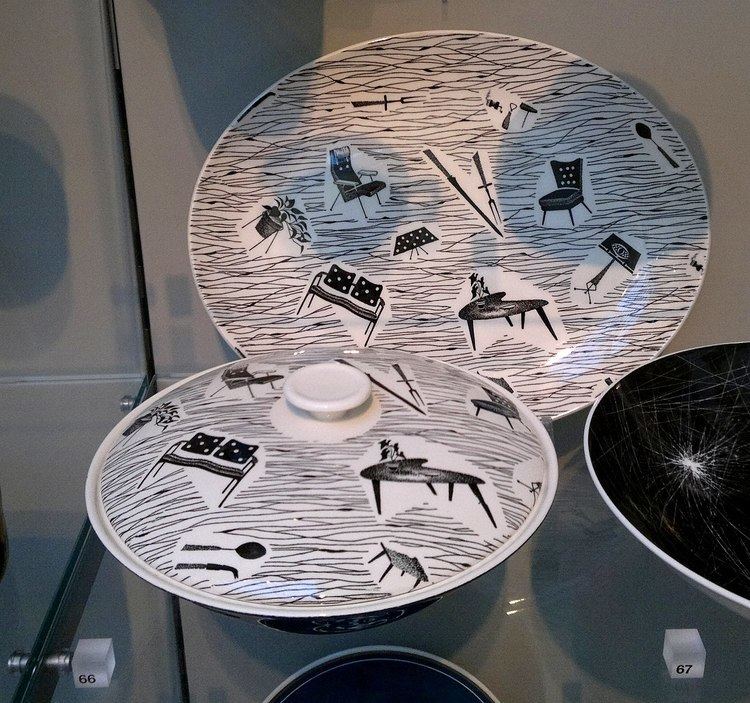 | ||
Homemaker tableware was a range of mass-produced tableware that was very popular in the United Kingdom in the 1950s and 60s. The pattern was designed by Enid Seeney (2 June 1931 - 8 April 2011), manufactured by Ridgway Potteries of Stoke-on-Trent between 1957 and 1970, (1968 according to the Victoria & Albert Museum), and initially sold exclusively through Woolworth's stores.
Contents
Production
The first prototype was a single plate displayed on the Ridgway stand at the 1956 Blackpool trade fair where it attracted little interest. A prototype coffee set was then produced which was noticed by a buyer from Woolworths who placed an order in 1957 for tea sets to be sold in five London stores. Seeney left Ridgway soon after and did not know that the range was being sold throughout Britain until she later spotted it for sale in a branch of Woolworths in Plymouth.
The Homemaker range was first produced using the Metro shape created by Ridgway design director Tom Arnold (died 2002). Homemaker was earthenware, transfer printed with a glaze applied on top, which enabled it to be produced relatively cheaply and to appeal to a mass market. It was made in several different factories over its life. In 1959, the American company Homer-Laughlin made copies of the design.
Design
The pattern was a distinctive black on white featuring illustrations of the latest home furnishings and utensils against a background of irregular black lines. Items illustrated included a boomerang or kidney shaped table, a Robin Day influenced armchair, a Gordon Russell type sideboard, plant holders on legs, tripod lights and lamp shades, and a two seat Sigvard Bernadotte style sofa.
Collecting
Because Homemaker was produced in very large quantities over a long period of time, few pieces are rare. The range is, however, highly collectable. A few pieces are scarce and have higher values, such as the Bon Bon Dish and the Cadenza Teapot which may be the rarest item in the range. Items in red on white are also known.
